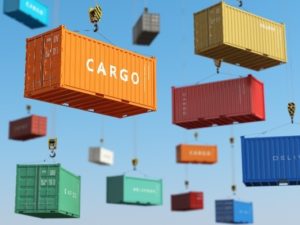
E-commerce is fast becoming a dominant sector in terms of growth. Accounting for 12% of total retail sales worldwide and predicted to surge to 17.5% by 2021. Just look at Amazon, which is reaching its 25th Birthday and getting close to being valued at a whopping 1 trillion dollars, overtaking Apple. As more and more companies jump on the e-commerce wagon and with the ease of selling cross-border online, governments are looking to ensure every penny is pocketed. In recent years, cross-border tax fraud has become a concern for authorities, this is due to the rise of e-tailors and the loopholes of the current VAT system.
Lately, the European Commission have become tougher on tax avoidance with online foreign sales, ensuring that businesses do not exploit the disparity in the VAT regimes amongst EU member states has become a focus. It was reported in 2017 that the EU loses approximately 50 billion Euros each year in VAT fraud and the UK loses around £4.4 billion.
There are new legislations around EU cross border VAT due to come into place in 2021 and expected to save EU companies around €1 billion in admin costs annually. In the meantime, HMRC have passed a new legislation in which marketplaces are jointly liable. Other countries such as Germany and France are set to be bringing in similar measures. Globally, there are efforts to reduce tax avoidance.
This potential impact of non-compliance on e-commerce businesses are the following:
Understanding the importance of following tax regulations is key to ensuring your business does not suffer at the hands of tax. We bring you 5 top VAT tips:
These will apply:
If your business meets the above criteria you won’t need to register for VAT in the country you are selling into until you hit the Distance Selling Thresholds. The thresholds vary from €35,000 to €100,000 so it is important to monitor your annual sales into each country.
It’s vital to know the thresholds as with the lower rates your sales could hit these relatively quickly if you have goods of high value. 
Currently B2B sales in Europe are split into two transactions creating a zero-rated supply in the member state *As an exporter you can obtain a rebate of all their input VAT *The customer is not charged any VAT Effectively the importer charges themselves VAT and pays it to their tax authority.
According to the European commission the new regulations would reduce cross-border Vat by €41 billion. The main benefit is to allow companies who sell online to deal with their EU VAT obligations all in one place.

The UK is set to stay in the EU VAT bloc until at least 2020. If the UK chooses to leave the EU VAT area, we will effectively become a ‘Third Party’. One benefit would have greater flexibility in setting VAT rates as the UK would no longer be bound by EU directives. The decision on whether we leave the EU VAT bloc will have a huge impact on how cross border VAT is handles either way. SimplyVAT are cross-border VAT experts, specialising in international e-commerce. Have any questions or confused about international VAT – get in touch today!

Let us develop a tailored solution for your business that will help you reach new international customers and grow your global sales.
get in touch